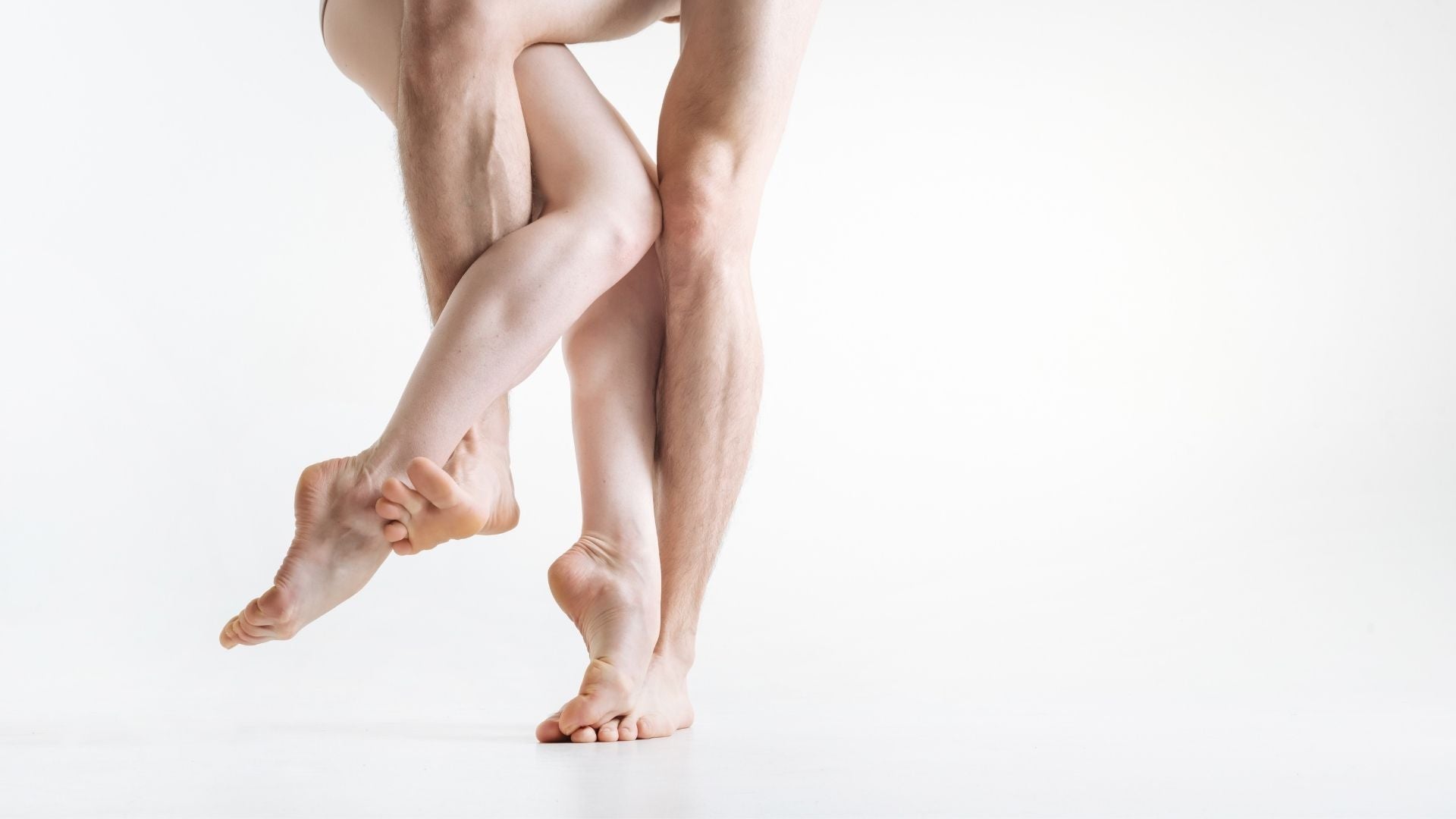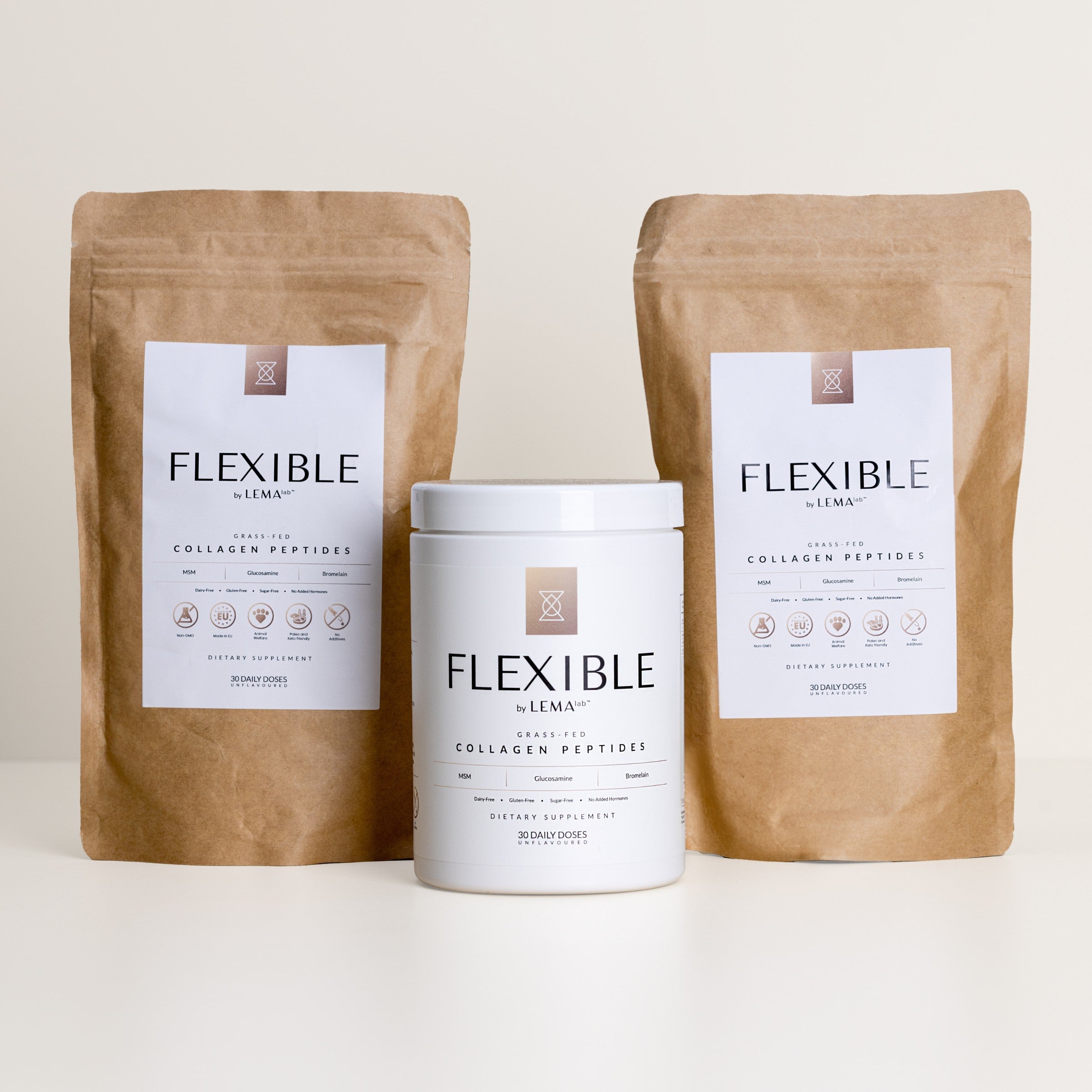
FIX YOUR LOWER BACK PAIN (PART 2)
WHY DOES MY LOWER BACK HURT?
Now that you understand how the back and its four parts work (Fix your lower back pain PART 1), let's dive into the concrete elements.
The spine is complex, but most back pain comes from a small number of problems. Although some suffer serious medical issues, most day-to-day back pain comes from imbalances, limitations, or mechanical issues.
MEDICAL PROBLEMS IN THE SPINE
The first and most severe group of problems is medical. It includes degeneration, arthritis, and other conditions that often come from a traumatic incident or a long degenerative process.
These aren't the cause of most people's day-to-day back pain. They're actual medical issues that need medical attention.
The Fix
If you suspect having such a condition, stop reading and talk to your doctor. They know you best and they are equipped to work within your personal medical history.
OVERTRAINING AND POOR-LOAD MANAGEMENT
The most obvious is that you're putting too much stress on your spine, a typical result of exercising or reaching extreme ranges of motion—axially loading (the weight during the lift is moving vertically) or hyperextending the lower back (overarching). The latter is very common in contortion or extreme flexibility training like in the photo below of contortionist Katrina Asfardi.

Because of the extra load on the lumbar and sacrum areas, it's often the area that will start hurting first. If you're doing too much and recovering too little, you'll experience degenerative stress-related conditions in the tendons, bones, and discs.
The Fix
Remember that you can only recover from so much stress. So make sure your practice and training demands are appropriate to your level. In other words, be patient and gradual in your training. I won't repeat it enough; it is crucial to improve at baby steps, respecting your body feedback. Pain is a clear one, and sometimes nothing is wrong per sé, but you have to slow down if you want to speed up later.
Additionally, it is crucial to eat and sleep properly. Recovery depends on eating plenty of protein with the right amino acids, vitamins, and minerals. It also requires restoring your health through sleep, rebalancing stretches, and relaxation.
PROBLEMS OF STABILISATION: CORE, MULTIFIDUS, AND GLUTES.
When your spine isn't properly stabilised, it encounters inaccurate loading. The errors happen in 3 areas: the core, multifidus and glutes.
Specifically, weakness and poor control in the core muscles or the multifidus (in the back) may be partially accountable for lower back pain. These muscles hold your spine in place, adapt to changing terrain underfoot, and absorb shock.
They also provide a squeezing influence on the spine, counteracting the outward expansion of discs. This process helps prevent issues like bulging discs, ruptures and hernias in this sensitive tissue.
The Fix
Get stronger and practice control of the core and back muscles. Strength increases what you can do with them, but control is essential for movement quality. Studies show that a movement control program (proprioception) effectively reduces back injury.

A good program should use co-contraction in the core and back (refer to the PNF explanation in The Art of Flexibility), resisted movement, isometric holds, and exercise specific to your ranges. In the photo above, an example of active backbend.
HIP OBLIQUITIES AND 'WEIRD' LOADING
Imbalances in the hips can cause back pain. They change the way your lower back handles the burden. When one side is tight or poorly controlled, it can collapse, placing stress on one side of the sacroiliac joint, the muscles of the lower back (i.e. Quadratus lumborum), or even lead to major differences in muscle mass of the spinal erectors.
Make sure that your legs and hips are balanced in strength and regularity of training. Exercises and stretching should focus on ironing out asymmetries which pull on one side of the spine or compromise lower back muscles.
The Fix
Develop a well-rounded set of strengths that prepare you for everything. Don't get locked into single movements or stuck doing the things you like best. Do more of your wrong side!
Make sure that your strength and mobility involve rotation, lateral bending, unilateral (single leg and arm) exercise, and isometric holds. Prepare your body for everything, and there will be a shorter list of things that put your spine at risk.
Don't overlook the hips. They're where the spine anchors, so training the abductors and adductors is crucial and the glutes and hamstrings.
WEAK HINGING: OVER-STRESSING THE SPINE
Poor movement quality and patterns can cause lower back pain. For example, if you're unable to pivot at the hips, you'll place undue stress on your lumbar spine. This load should be on the glutes and hamstrings, instead.
Learning better movement techniques isn't just for making your practice prettier. It's a way of moving load from the wrong muscles (like the QL) or the joints, protecting them from premature ageing, too much compression, and ultimately more significant problems like nerve pain.
Many people's back pain gets better when learning to hip hinge properly. It will reduce the immediate pain and build muscle mass to control the spine, like the multifidus and spinal erectors mentioned above.

The Fix
Train the hinge movement. It relieves spinal stress and builds a stronger back and core. Make sure this movement is practised for quality. If you lose core tightness and start arching the back, you'll lose the benefit of the practice. Exercises like goblet-loaded or banded good mornings are great learning and strengthening exercise for hinging.
INHIBITION AROUND THE SPINE AND HIPS
If you can't control your hips and your spine, you're on a fast track to back pain. This happens when the stabilisers of the hips are tight, inactive, or weak. There are a few areas where this applies most:
- Hip flexors
- Hamstring
- Adductors
- Glutes and abductors
If any of these areas is too tight, too weak, or fails to work, then your hips are unstable. This transfers shock into the lower back, as well as places demand on the lower back, shifting stress onto lower back muscle, and even causing nerve pain like piriformis syndrome. Again, if you are a very flexible person or train to become such, your risk for this kind of injury could even be higher.

The Fix
The solution is strength and flexibility in these muscle groups. Practice full ranges in stretching and strengthening alike. The same old rule: Strengthen what's weak, lengthen what's tight. Bodybuilders should stretch more and contortionists do more resistance training.
The muscle groups mentioned above need to be given the care and recovery focus to match the stabilisation they provide you with. Make sure that you move through their whole range at very low intensities—including warming up, cooling down, or out-of-practice stretching.Practice your breathing during the stretch, and try to active contract and relax muscles when stretching them. Read more on PNF for flexibility.
HOW TO FIX LOWER BACK PAIN? STEP BY STEP SELF-MANAGEMENT
1—Do not cause back pain.
Stop doing things that are causing you pain and increase the severity of pain after doing them. Reducing loading on the spine through exercise and practice may be all it takes to save you the constant pain hassle.
2—Stretch and strengthen
Regular exercise—both for strength and flexibility—is key to keeping your back healthy.
Move through all three movements of the spine explained in FIX YOUR LOWER BACK PAIN (PART 1) to get stronger and build control of your spine.
Address asymmetries, weakness, and inflexibility first. These are the most important areas to change. Fixing problems around the spine tends to improve lower back health rapidly.
3—Recover properly.
Give your back the nutrients it needs:
- Protein and amino acids (especially collagen peptides).
- A healthy calorie intake (avoid undereating or overeating).
- Plenty of vegetables.
Then make sure you are getting enough rest, sleep, and relaxation time— they help you recover and can significantly improve back health.
FINAL THOUGHTS
Your spine is complex, but care starts with simple things.
When we address common problems, back pain often reduces or disappears. It's a problem with a root cause. Put time into spinal health, hip stability, and the recovery processes that your tissue need. These habits are critical to a pain-free back.
You may be also interested in














Leave a comment
This site is protected by hCaptcha and the hCaptcha Privacy Policy and Terms of Service apply.